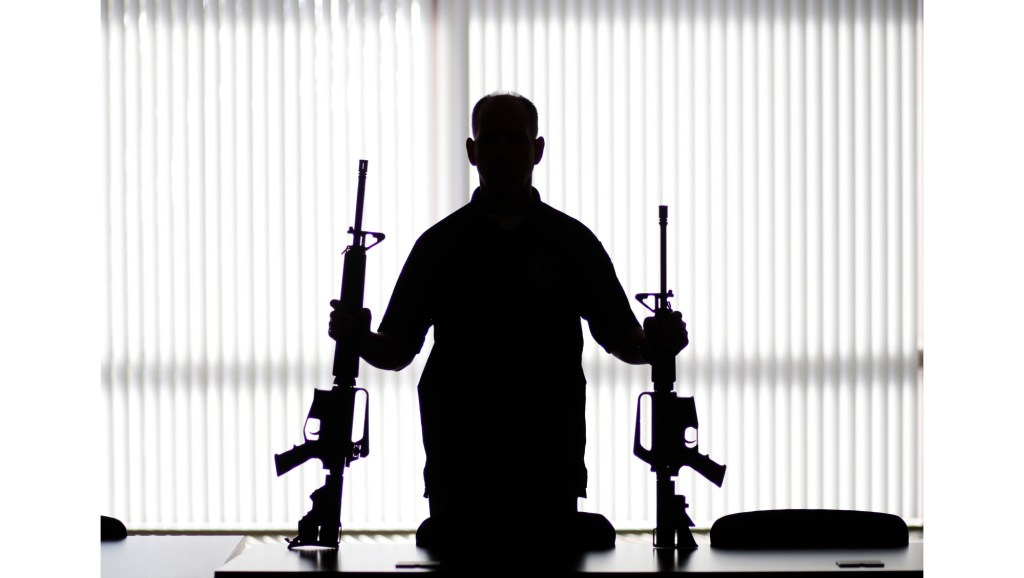A report released by the state Department of Justice on Wednesday, Oct. 2, credits new laws as well as actions by police on the street for reversing two decades of the increased use in crimes of so-called ghost guns, firearms that are untraceable because they lack the legally required serial numbers.
The report, discussed at a news conference in Sacramento by state Attorney General Rob Bonta, piggybacks on data released by the DOJ in July on the number of guns that were seized and connected to crimes in California. That report listed the number of guns reported by each city and county and showed a dramatic decrease in the total seized in 2022 and 2023, but lacked an explanation of what the numbers meant.
RELATED: Gov. Newsom signs bills to expand restrictions on who can own guns in California
The new report, Bonta said, contains “very important data and information with respect to one, the significant challenges we have faced in recent years on ghost guns but also, a report that is full of hope in that we have made significant progress in California with concrete, tangible actions we have taken when it comes to litigation, when it comes to legislation and policy changes.”
Bonta held up a copy of the 84-page report produced by the Office of Gun Violence Prevention and said he hopes it will be a blueprint for other states.
“We don’t want these to gather dust,” Bonta said. “We want them to be an inspiration for action.”
DOJ statistics show a steady increase in the number of ghost guns seized that were linked to crimes statewide from 2010 through 2021. That figure was 848 in 2010 and reached 13,091 in 2021 — almost double the previous year’s total — before decreasing to 12,290 in 2022 and 10,390 in 2023.
In some cases, guns characterized by the DOJ as “antique” lack serial numbers because they were manufactured before that identifying mark was required. Others once had serial numbers, but someone obliterated them.
The state, as well as local governments, have been using legislation to tackle the third kind of ghost gun, those that can be created using a kit. They start as an unfinished lower receiver, which houses the gun’s firing mechanisms. Because they’re incomplete, unfinished lower receivers don’t need to be registered. The rest of the gun can then be assembled from parts bought online.
A state law signed by Gov. Gavin Newsom in 2022 bans the sale, transfer, or possession of unserialized firearm parts.
Earlier, in 2020, the state DOJ sued the federal Bureau of Alcohol, Tobacco, Firearms and Explosives, compelling the ATF to reverse itself and classify ghost guns as firearms subject to federal regulations.
Law enforcement officials say they believe fewer ghost guns are being seized because they are being taken off the streets.
In San Bernardino County, Sheriff Shannon Dicus credits Operation Consequences, which targets violent crime, gangs and illegal firearms. San Bernardino Police Chief Darren Goodman has made seizing illegal guns a priority, and homicides in the city were down by 50% in 2023, he said. In 2021, the city of Los Angeles passed an ordinance prohibiting the purchase, possession or sale of unserialized firearm frames or receivers and unserialized completed firearms.
According to preliminary data from the Centers for Disease Control and Prevention, California’s gun homicide rate decreased by about 23% from 2021 to 2023.

Bonta warned that the work is not done. The report says ghost gun manufacturing is increasingly shifting toward 3-D printers and computer-controlled milling machines that produce guns for buyers who seek to avoid required background checks.
The report noted the seizure of a ghost gun from a suspect who police in San Jose said pointed it at a domestic violence victim in 2020.
The suspect was unfazed.
“I’ll just build another one,” he told police.

















































